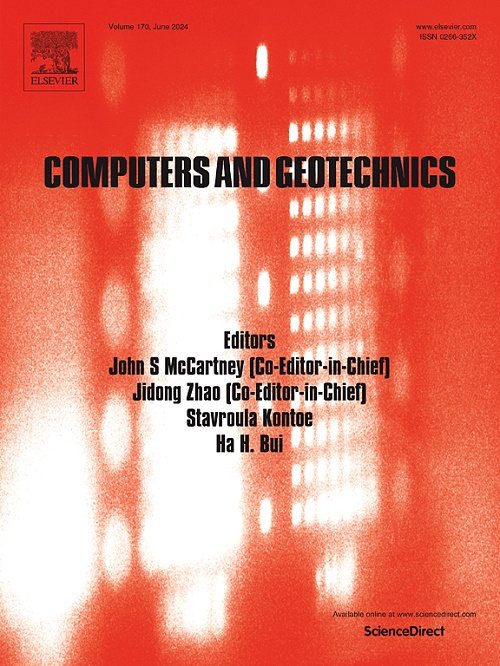Connecting landslide basal sliding surface characteristics with post-failure kinematics and impact on rigid structures: An MPM numerical study
IF 5.3
1区 工程技术
Q1 COMPUTER SCIENCE, INTERDISCIPLINARY APPLICATIONS
引用次数: 0
Abstract
Understanding the landslide failure mechanism, the deformation process, and ultimately the impact forces generated by landslides on structures is essential for risk assessment. This paper connects these three aspects using the Material Point Method (MPM) and highlights the effect of landslides’ basal failure surface characteristics (i.e., geometry and interface friction) on (a) failure mechanism, (b) post-failure kinematics, and (c) impact force on rigid structures. The geometry of a biplanar landslide is considered, along with different types of slope transitions along the sliding basal surface, from a rotational landslide to a perfect biplanar landslide. A comprehensive parametric study with 310 simulations is performed to analyze the landslide post-failure behavior in terms of the radii of transition, the basal friction angle, the distance to the rigid wall, the roughness of the rigid wall, and the scale of the landslide. The results are presented regarding energy evolution, maximum impact force on the rigid wall, and final runout (in the absence of the wall). Results show that relatively small changes in the slope transition can have relevant impacts on kinematics and impact force. For validation purposes, the maximum impact force resulting from numerical results is compared to the predictions from existing semi-empirical approaches, which compare reasonably well. Finally, different methods to evaluate the impact velocity are evaluated, and the effect of numerical practices in the study of impact forces is also discussed.
求助全文
约1分钟内获得全文
求助全文
来源期刊

Computers and Geotechnics
地学-地球科学综合
CiteScore
9.10
自引率
15.10%
发文量
438
审稿时长
45 days
期刊介绍:
The use of computers is firmly established in geotechnical engineering and continues to grow rapidly in both engineering practice and academe. The development of advanced numerical techniques and constitutive modeling, in conjunction with rapid developments in computer hardware, enables problems to be tackled that were unthinkable even a few years ago. Computers and Geotechnics provides an up-to-date reference for engineers and researchers engaged in computer aided analysis and research in geotechnical engineering. The journal is intended for an expeditious dissemination of advanced computer applications across a broad range of geotechnical topics. Contributions on advances in numerical algorithms, computer implementation of new constitutive models and probabilistic methods are especially encouraged.
 求助内容:
求助内容: 应助结果提醒方式:
应助结果提醒方式:


